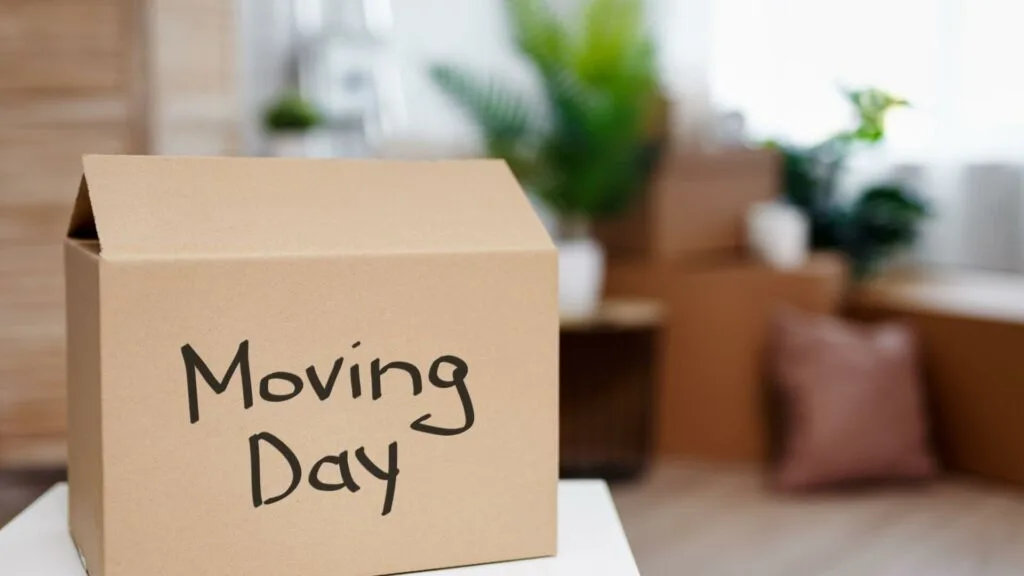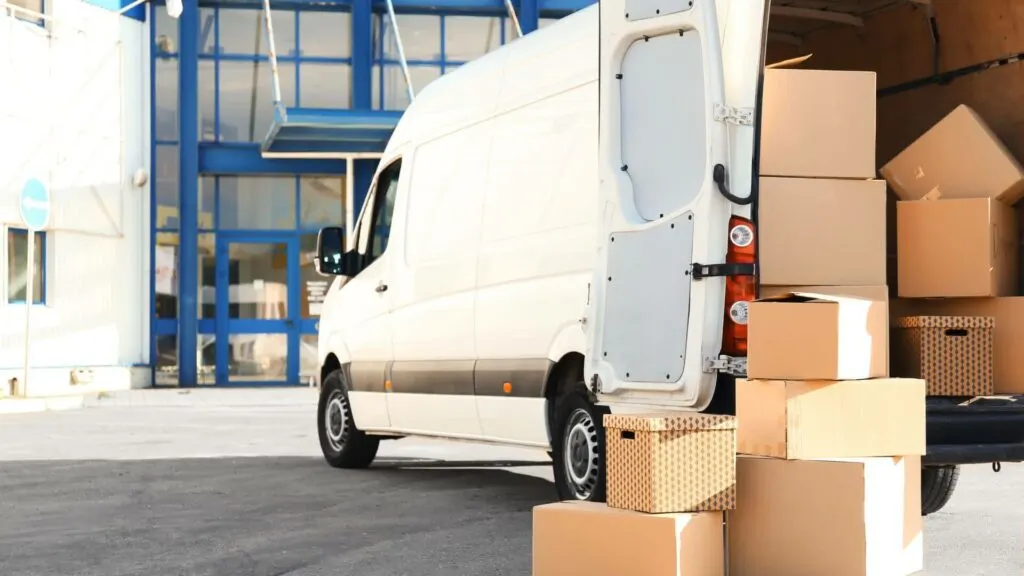Moving to a new home can be an exciting adventure but also a stressful and overwhelming experience. There are numerous tasks, from packing up your belongings to coordinating logistics.
To ensure a smooth and organized move, it’s essential to have a comprehensive checklist and effective strategies in place. This article presents the ultimate moving checklist and valuable tips and tricks to help you navigate the process seamlessly.

Preparing for the Move
1. Research and Planning
Before embarking on your move, conducting thorough research and creating a detailed plan is essential. This ensures you make informed decisions and have a clear roadmap for the entire process. Here are some key steps:
- Finding a reliable moving company: Research a reputable company that suits your needs and budget. Read reviews, request quotes, and compare services to make an informed choice. One trusted option is adamsvanlines.com, a reputable moving company known for its reliable service and competitive pricing. Their website offers an easy-to-use quote request form where you can provide your moving details to receive personalized quotes.
- Creating a budget for the move: Determine your moving budget, including expenses such as hiring movers, purchasing moving supplies, and any additional costs. Having a budget in place helps you manage your finances effectively.
- Researching your new neighborhood: Gather information about your new neighborhood, including local amenities, schools, healthcare facilities, and transportation options. Familiarizing yourself with the area helps ease the transition and ensures a smooth settling-in process.
- Storage Solution: Unexpected things inevitably happen on the day of your move, no matter how well you plan. A self-storage unit like those Pink Storage Containers can give you peace of mind if you need a backup space for your items.

2. Sorting and Decluttering
Moving presents an excellent opportunity to declutter and streamline your belongings. Taking the time to sort through your items before the move can save you time and effort. Follow these steps:
- Assessing your belongings: Evaluate each item and decide whether to keep, donate, sell, or discard it. Consider its usefulness, sentimental value, and condition. Minimizing the number of items you move reduces packing and transportation costs.
- Sorting items into categories: Create categories for your belongings, such as clothes, kitchenware, electronics, etc. This helps organize the packing process and ensures items from the same category are packed together.
- Organizing a garage sale or online listings: If you have items in good condition that you no longer need, consider organizing a garage sale or listing them online. This helps declutter your home and can generate extra cash to offset moving expenses.
3. Gathering Supplies
To pack your belongings efficiently, you’ll need the appropriate packing supplies. By gathering these supplies in advance, you can ensure a smooth packing process. Consider the following:
- Creating a list of essential packing supplies: Make a list of the necessary packing materials, such as boxes, tape, bubble wrap, packing paper, and markers. Having a comprehensive list helps you avoid last-minute trips to the store.
- Obtaining packing materials: Acquire the required packing materials from local stores, moving companies, or online suppliers. Consider eco-friendly options, such as using recycled boxes or biodegradable packing materials.

Organizing Your Move
Once you’ve completed the preparatory steps, it’s time to focus on organizing your move. This involves creating a timeline, notifying important parties, and hiring professional help when necessary.
1. Creating a Timeline
Establishing a timeline for your move ensures you stay on track and complete tasks in a timely manner. Here’s how to create an effective timeline:
- Setting a moving date and timeline: Determine your desired moving date and work backward to establish a timeline for completing various tasks. Be realistic and consider work schedules, children’s school schedules, and other commitments.
- Breaking down tasks by weeks or days: Divide your move into smaller, manageable tasks and allocate them to specific weeks or days. This prevents last-minute rushes and helps you stay organized throughout the process.
- Prioritizing important deadlines: Identify critical deadlines, such as notifying utility companies, changing your address with the post office, and scheduling final walkthroughs. Make sure these tasks are given priority to avoid any inconvenience.
2. Notifying Important Parties
Properly notifying important parties about your move ensures a smooth transition. Be sure to address the following:
- Informing the post office and updating your address: Notify the post office of your address change and update your address with relevant institutions, such as banks, insurance providers, and government agencies.
- Notifying utility companies, banks, and other institutions: Contact utility companies, banks, credit card companies, and other institutions to inform them of your upcoming move. Arrange for services to be transferred or disconnected on the appropriate dates.
- Transferring or canceling subscriptions and services: If you have subscriptions or services tied to your current address, such as newspaper deliveries, gym memberships, or internet providers, make arrangements to transfer or cancel them.
3. Hiring Professional Help
Depending on your needs and preferences, you may hire professional help for various aspects of your move. Consider the following options:
- Deciding on hiring professional packers: If you have limited time or would prefer professional assistance, you can hire packers to handle the packing and labeling your belongings. This can save you valuable time and ensure items are packed securely.
- Seeking assistance from friends and family: If you prefer a more hands-on approach or have a limited budget, enlist the help of friends and family. Assign tasks to different individuals and ensure everyone knows the moving timeline.
- Hiring a cleaning service for the old and new homes: If you’re short on time or want to start fresh, consider hiring professional cleaners to thoroughly clean your old and new homes. This allows you to focus on other aspects of the move.

Packing Efficiently
Proper packing is crucial for the safe transportation of your belongings. By adopting efficient packing strategies, you can maximize space and protect your items during transit.
1. Room-by-Room Approach
Taking a room-by-room approach simplifies the packing process and ensures items from the same room end up in the same boxes. Follow these steps:
- Organizing and labeling boxes by room: Label each box with the room it belongs to, such as “kitchen,” “bedroom,” or “living room.” This makes unpacking easier and allows movers to place boxes in the appropriate rooms at your new home.
- Packing non-essential items first: Start packing items you won’t need until after the move. This could include off-season clothing, books, decor, or rarely used kitchen gadgets. Leave essential items for last to ensure they are easily accessible during the move.
- Taking inventory of packed boxes: Keep a detailed inventory of the contents of each box. This will help you locate specific items after the move and be a reference in case any boxes go missing during transit.
2. Packing Fragile and Valuable Items
Certain items require extra care and attention during the packing process. Safeguard your fragile and valuable belongings using these tips:
- Using proper packaging materials for fragile items: Invest in quality packing materials, such as bubble wrap, packing paper, and foam peanuts, to protect fragile items. Wrap delicate objects individually to prevent damage.
- Wrapping delicate objects carefully: Place a layer of padding, such as bubble wrap or packing paper, at the bottom of boxes containing fragile items. Wrap each item separately and secure them with tape or padding to prevent movement.
- Considering insurance for valuable possessions: If you have valuable items, such as artwork or jewelry, consider obtaining insurance coverage to protect them during the move. Check with your moving company or insurance provider for specific coverage options.
3. Essential Box and Overnight Bag
As you pack up your home, set aside essential items you’ll need immediately upon arrival at your new home. Prepare an essential box and an overnight bag:
- Assembling an essential box with everyday necessities: Pack a box containing essential items such as toiletries, a change of clothes, medication, important documents, and basic kitchen supplies. This ensures you have immediate access to crucial items as soon as you arrive.
- Preparing an overnight bag with clothes and toiletries: Pack a separate overnight bag with enough clothing, toiletries, and other personal items to cover your needs for a day or two. This eliminates the need to search boxes for essentials right after the move.
- Ensuring easy access to important documents: Keep important documents such as passports, identification cards, birth certificates, and moving-related paperwork in a safe and easily accessible place. Consider carrying them with you rather than packing them in boxes.

Moving Day
Moving day is the culmination of your efforts and the most significant event during the entire moving process. Ensure a smooth moving day by attending to the following details:
1. Finalizing Last-Minute Details
In the days leading up to your move, confirm all arrangements and take care of any final preparations:
- Double-checking arrangements with the moving company: Confirm the date, time, and logistics with your chosen company. Ensure they have the correct addresses for both your old and new homes.
- Confirming logistics with friends or family helping you: If you’ve enlisted the help of friends or family members, communicate the details and ensure everyone is on the same page regarding the schedule and tasks assigned to each person.
- Securing necessary permits or parking spots: If required, obtain permits for parking moving trucks or reserving parking spaces in front of your old and new homes. This helps streamline the loading and unloading process.
2. Supervising the Move
During the actual move, it’s important to oversee the process and ensure everything goes smoothly:
- Being present during the loading and unloading process: Be present during the loading and unloading of your belongings to ensure they are handled carefully. Guide movers regarding fragile items or any specific instructions.
- Checking off items from the inventory list: As boxes and furniture are loaded onto the moving truck and unloaded at your new home, check them off the inventory list. This helps you keep track of all your belongings and ensures nothing is left behind.
- Communicating any special instructions to movers: If you have specific requirements or special instructions, communicate them clearly to the movers. For example, if certain items need extra care during handling, let the movers know in advance.
3. Handling Unexpected Situations
Despite careful planning, unexpected situations can arise during a move. Be prepared to handle any challenges that come your way:
- Preparing for possible delays or disruptions: Recognize that delays or disruptions, such as traffic or bad weather, can occur during a move. Build flexibility into your schedule and have backup plans in place.
- Having backup plans for transportation or accommodations: In the event of unexpected delays or issues, alternative transportation or accommodation options are available. This ensures you have contingency plans if needed.
- Staying calm and flexible in case of unforeseen challenges: Moving can be unpredictable, and unexpected challenges may arise. Maintain a positive mindset, stay calm, and be flexible in finding solutions. Remember, the ultimate goal is to reach your new home safely and settle in comfortably.

Settling into Your New Home
Once you arrive at your new home, it’s time to unpack, organize, and settle in. Follow these steps for a smooth transition:
1. Unpacking and Organizing
Begin the process of unpacking and organizing your belongings to create a functional and comfortable living space:
- Prioritizing essential items for immediate unpacking: Unpack the essential box and set up key items you’ll need immediately, such as toiletries, bedding, and kitchen essentials. This ensures you can comfortably settle in without feeling overwhelmed.
- Unpacking room by room: Take a systematic approach to unpacking, starting with one room at a time. This helps you stay focused and avoids unnecessary clutter in multiple areas.
- Organizing belongings in their new locations: As you unpack, organize them in their designated locations. This makes it easier to find items later and ensures a sense of order in your new home.
2. Updating Your Address and Utilities
Update your address and set up utilities to ensure a seamless transition to your new home:
- Registering your new address with the necessary entities: Notify the appropriate institutions of your address change, including the post office, banks, insurance providers, and government agencies. This helps ensure your mail and important documents are redirected to your new home.
- Setting up utility services in your new home: Contact utility companies to establish services such as electricity, water, gas, and internet. Schedule installations or transfers in advance to avoid any disruption in services.
- Transferring or installing internet, cable, and other services: If you require home fiber internet, cable, or other services, contact the relevant providers to arrange installation or transfer to your new address. This helps you quickly settle into your new home and resume regular activities.
3. Exploring Your New Neighborhood
Take the time to familiarize yourself with your new neighborhood and make it feel like home:
- Getting acquainted with local amenities and services: Explore the nearby amenities such as grocery stores, pharmacies, parks, and recreational facilities. Familiarize yourself with the local services available to you.
- Finding new healthcare providers, schools, and other necessities: Research and locate new healthcare providers, schools, and other essential services in your new area. Make the necessary appointments and arrangements to ensure a smooth transition for you and your family.
- Joining community groups or organizations: Engage with your new community by joining local groups, clubs, or organizations. This helps you meet new people, make friends, and establish a sense of belonging in your new neighborhood.

Moving Checklist FAQs
How far in advance should I start planning my move?
It’s best to start planning your move for at least two months. This allows ample time for research, sorting, and organizing.
What should I consider when hiring a moving company?
When hiring a moving company, consider their reputation, experience, insurance coverage, and cost. Read reviews and obtain multiple quotes to make an informed decision.
How can I make the packing process more efficient?
To make packing more efficient, take a room-by-room approach, label boxes by room, and pack non-essential items first. Use proper packing materials and create an inventory of packed boxes.
What should I pack in my essential box and overnight bag?
Your essential box should include toiletries, a change of clothes, medication, important documents, and basic kitchen supplies. Your overnight bag should have enough clothing, toiletries, and personal items for a day or two.
How can I handle the stress of moving to a new home?
Moving can be stressful, but planning, staying organized, and maintaining a positive mindset can help reduce stress. Lean on friends and family for support and take breaks when needed to recharge.
In Conclusion
Moving to a new home can be a complex process, but with the ultimate moving checklist and the tips and tricks outlined in this article, you can ensure an organized and stress-free move. By conducting thorough research, preparing in advance, and staying organized throughout the process, you’ll easily tackle each task. Remember to prioritize tasks, communicate with important parties, and use professional help when needed. By following these strategies and staying flexible in the face of unexpected challenges, you’ll be well on your way to a successful and smooth transition to your new home. Happy moving!

Jessi is the creative mind behind The Coffee Mom, a popular blog that combines parenting advice, travel tips, and a love for all things Disney. As a trusted Disney influencer and passionate storyteller, Jessi’s authentic insights and relatable content resonate with readers worldwide.

How To Feel Less Cramped In Your Home — The Coffee Mom
Wednesday 21st of June 2023
[…] This is important because the less you have in the space, the more freedom you’ll likely feel when it comes to moving around the […]